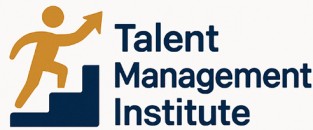
Understanding Employee Engagement
Decoding the Essence of Employee Engagement
Employee engagement is more than just a buzzword in today's corporate landscape. It represents a crucial element that can significantly impact an organization's success. At its core, employee engagement refers to the emotional commitment employees have towards their work and the company. Engaged employees are those who feel valued and are motivated to contribute to the organization's goals, resulting in improved performance and job satisfaction.
Understanding the nuances of employee engagement is essential for any company aiming to foster a positive work environment. It involves recognizing the factors that influence how employees feel about their roles and the organization as a whole. This understanding can lead to better employee retention and a more cohesive team dynamic.
Factors Influencing Engagement Levels
Several factors can affect engagement levels within a company. These include:
- Company Culture: A positive company culture that promotes open communication and collaboration can enhance employee experience and engagement.
- Feedback and Communication: Regular feedback and clear communication from managers help employees feel valued and understood.
- Work-Life Balance: Supporting a healthy work-life balance can improve employee satisfaction and retention.
- Performance Management: Effective performance management practices ensure that employees' efforts align with organizational goals.
By focusing on these areas, organizations can create an environment where employees are more likely to be engaged and committed to their work. For more insights on enhancing employee engagement, consider exploring enhancing employee engagement through Workify strategies.
Role of HR in Fostering Engagement
The Catalyst Role of Human Resource in Driving Engagement
Human Resource (HR) departments play a pivotal role in shaping the culture and fostering employee engagement within any organization. By focusing on creating an engaging work environment, HR can significantly contribute to employees feeling valued and satisfied in their jobs. One major responsibility of HR is to develop and implement strategies that align with the company culture and goals, ensuring that every team member understands how their work contributes to the organization's overall success. Effective communication is key in this aspect, as it helps to clarify expectations, provide performance feedback, and foster a sense of inclusion among employees. Another crucial aspect where HR can profoundly impact engagement levels is through the design and execution of comprehensive employee engagement surveys. These surveys are an essential tool for gauging how engaged employees feel and provide actionable insights that can guide management actions and strategies. Consistent feedback mechanisms enable teams to address areas of concern promptly and improve the overall employee experience. Retention of top talent is an ongoing challenge that HR must tackle head-on. By implementing performance management systems and recognizing employee achievements, HR can enhance job satisfaction and decrease turnover rates. Recognition of team members' contributions leads to an environment where employees feel a part of the larger picture, which positively affects engagement and retention. Additionally, HR is instrumental in promoting a healthy work-life balance. By crafting policies that respect employees' personal time and advocate for flexibility, HR makes efforts to create an environment where employees are more likely to be productive and engaged. For further insights into actionable HR strategies that can enhance employee engagement, consider exploring the resources provided by Enhancing Employee Engagement through Workify Strategies.Strategies for Sustaining Engagement
Crafting a Culture of Continuous Engagement
Maintaining high levels of employee engagement requires an ongoing commitment to nurturing an environment where employees feel valued and vital to the organization's success. Engaged employees are both productive and loyal, contributing significantly to retention and overall performance. To achieve this, companies implement a range of strategies designed to sustain enthusiasm and dedication across all levels of the workforce.
- Effective Communication: Open and transparent communication fosters trust and clarity around organizational goals. Regularly sharing updates and listening to employee feedback through surveys can improve the employee experience significantly.
- Setting Meaningful Goals: Crafting effective goals for performance reviews ensures employees understand their contributions to the company’s vision. Achieving these goals should be rewarding, boosting job satisfaction and engagement.
- Encouraging Work-Life Balance: Supporting employees in achieving a healthy work-life balance is crucial. Policies that promote flexibility can help retain talent by ensuring employees feel their personal and professional lives are in harmony.
- Recognition and Feedback: Regular feedback and recognition of achievements make employees feel valued. Whether through formal channels like performance management reviews or informal appreciation, acknowledgment plays a significant role in sustaining motivation.
- Nurturing a Positive Work Environment: A thriving company culture that highlights teamwork and shared values fosters an engaging work environment. Managers play a key role in modeling desired behaviors and supporting team members in their professional journeys.
By embedding these strategies into the core of human resource management practices, organizations can create a dynamic culture where employee engagement thrives. The result is not only improved employee retention and satisfaction but also enhanced overall performance and business success.
Challenges in Talent Management
Obstacles in Maintaining High Engagement
In the realm of talent management, ensuring sustained employee engagement presents a spectrum of challenges, each with its implications on a company's performance and culture. Identifying these obstacles is crucial for human resource professionals who aim to nurture a thriving work environment. One significant challenge is establishing a balance between ensuring job satisfaction and maintaining productivity goals. Employees must feel valued and recognized for their efforts, which contributes to their sense of attachment to the organization. However, when demands overshadow appreciation, engagement levels may drop, affecting performance and retention rates. Human resource management often struggles with creating a positive work-life balance, which is integral to employee engagement. Overbearing workloads and a lack of flexibility can lead to burnout, reducing the effectiveness of engagement strategies. Organizations need to foster a culture where work-life harmony is not just encouraged but actively supported. Another obstacle is the effectiveness of communication and feedback mechanisms within an organization. Employees need clear, consistent communication from their managers about their roles and objectives. Regular performance management and constructive feedback help employees feel involved in the company’s mission. The absence of these elements can make employees feel disconnected, undermining the overall employee experience. Conducting engagement surveys is common to gauge employee sentiment, yet this process can present its hurdles. Surveys must be designed thoughtfully to extract genuinely useful insights. Moreover, organizations often fail to act on survey results, leaving employees feeling unheard and undervalued. Ensuring that feedback leads to tangible changes is key to enhancing employee retention and creating an engaged workforce. In addressing these challenges, companies should critically evaluate their company culture and internal communication strategies. By doing so, they can better support team members, foster an environment where employees are consistently engaged and committed to their roles. The goal is to cultivate a work environment that fuels not only employee satisfaction but also the organization’s long-term engagement action success.Measuring Engagement Success
Assessing Engagement for Better Outcomes
To ensure the vitality of employee engagement strategies, organizations must focus on measuring the success of their initiatives. This involves understanding how engaged employees are within the company and identifying areas that require improvement. A key part of management is determining whether employees feel valued and connected to their work.
Here are some essential practices for measuring engagement success:
- Engagement Surveys: Regular employee surveys are indispensable tools for gauging engagement levels. They provide insights into employee satisfaction, areas of concern, and potential improvements in the work environment. To get the most accurate results, surveys should encourage open communication and honest feedback from team members.
- Feedback Channels: Implementing ongoing feedback mechanisms can help managers understand employees' perspectives on their roles and the company culture. Active listening and prompt action on feedback help reinforce that employees' contributions are valued and acknowledged.
- Key Performance Indicators (KPIs): Utilize KPIs to monitor engagement-driven outcomes such as retention rates, productivity levels, and overall performance. Tracking changes in these metrics over time can provide valuable insights into the effectiveness of engagement strategies.
- Observational Methods: Managers should be attuned to the dynamics of their teams. Paying attention to how employees interact, their enthusiasm for work, and their willingness to achieve goals can offer a qualitative measure of engagement.
Management Practices: Engaged employees thrive in a supportive work environment fostered by effective leadership and resource management. Strong managerial practices can directly impact employee experience and retention, aligning with engagement goals and sustaining a positive company culture.
Regularly assessing these metrics is fundamental to understanding the engagement action within the organization. By doing so, HR can strategically navigate the challenges in talent management and refine their approaches to enhancing employee engagement overall.
Case Studies of Successful Engagement
Success Stories of Employee Engagement
Employee engagement initiatives, when executed well, can lead to significant improvements in organizational performance and employee satisfaction. Here, we explore a few real-world examples that highlight the impact of effective human resource strategies on employee engagement.- Company A: By implementing a robust communication strategy, Company A enhanced transparency and trust among its team members. Regular feedback and open dialogue sessions encouraged employees to feel valued and heard, leading to a marked improvement in job satisfaction and retention rates.
- Organization B: Focusing on creating a positive work environment, Organization B introduced a tailored performance management system. This system aligned individual goals with the company's objectives, which resulted in a more motivated and engaged workforce. High engagement levels were noted in their employee surveys, proving the efficiency of such strategic alignment.
- Enterprise C: An emphasis on culture and employee experience led Enterprise C to revamp its employee engagement action plans. By fostering a work-life balance and a supportive company culture, employees felt more connected and committed to the company’s mission, thereby boosting overall performance.













